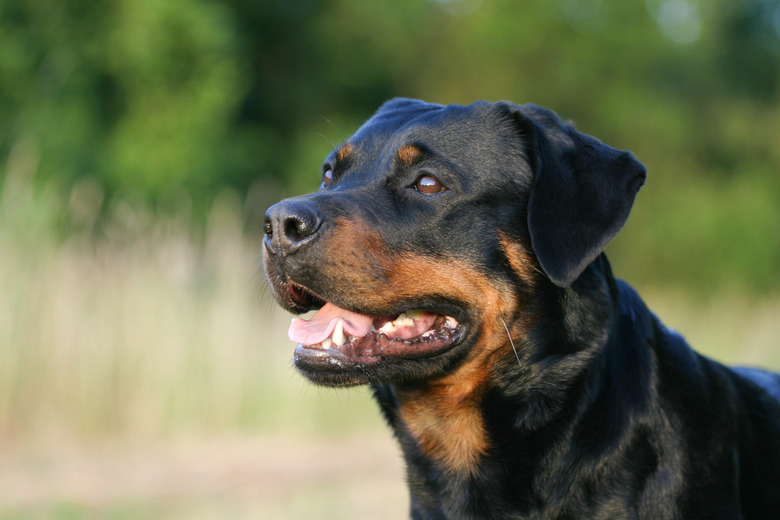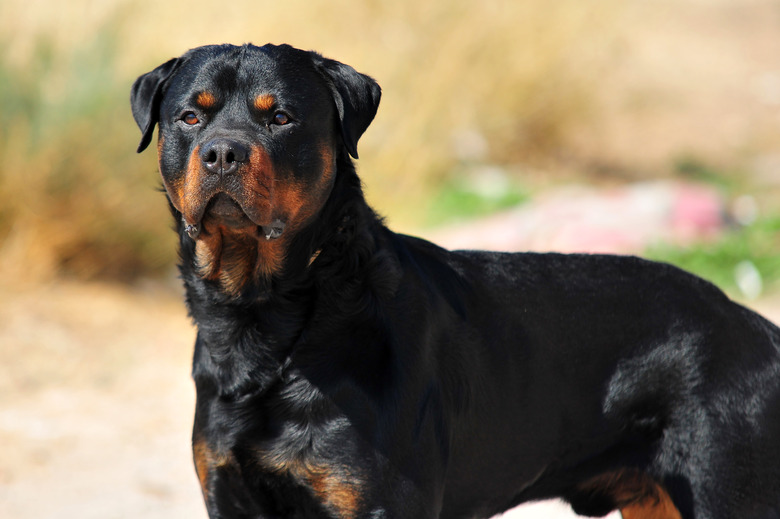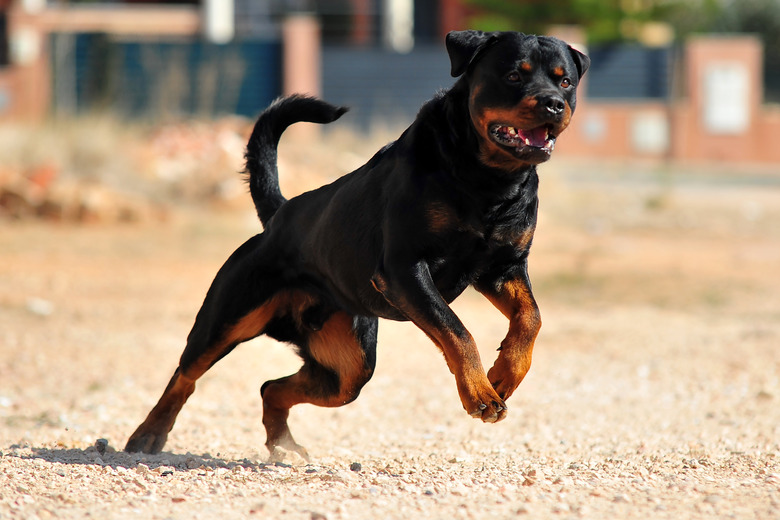How To Identify A Rottweiler
The Rottweiler is a balanced and beautiful breed known for a gait that's both steady and sure. This working dog exudes confidence and courage, but he can also be wary of strangers. Still, with proper early socialization, a pure Rottweiler will display friendliness to family and friends alike. If you're looking for a loyal, loving dog for your home, the majestic Rottweiler is an excellent choice.
To identify the Rottweiler original breed, it helps to know the details of this animal's size, body features, coat coloring, and personality.
Pure Rottweiler size and history
While a Rottweiler is considered a medium-large dog, this pet may appear more on the large side to those who are unfamiliar with the breed. With a powerful build and agility to spare, this working dog breed is a compact animal with a history of cattle guarding and accompanying Roman troops into battle. Pure Rottweiler males stand 24 to 27 inches tall, while females measure about 22 to 25 inches.
Recognized by the American Kennel Club as an official breed in 1931, this deep-chested dog sports a muscular frame and a blocky head and tips the scales at 135 pounds for males and up to 100 pounds for females. With a life expectancy of about 10 years, Rottweilers are quite smart and exceptionally trainable, especially when obedience lessons start early and consist of reward-based lessons.
Rottweiler eyes and ears
A Rottweiler purebred will feature a head of medium length that's also quite broad between the ears. A Rottie's eyes are typically dark brown, almond-shaped, and somewhat deep-set, and they'll often appear alert and confident in their expression. Rottweiler ears are medium-sized and triangular in shape, and they're set wide apart atop the head. Other breed distinctions include a broad muzzle, black lips, and a rounded nose that's always black.
Rottweiler body details
Once a valued farm animal, today's Rottweilers have transitioned to become police companions, guide dogs, and search-and-rescue workers. For each particular task, this breed's body is more than equipped with its robust and well-muscled neck, broad chest, and strong shoulders. A purebred Rottweiler also has rounded, compact feet as well as upper thighs that are long and sinewy. Many Rottweilers who become show dogs will display a tail that's been docked close to the body.
Rottweiler coat and coloring
A coarse but straight outer coat of medium length that lays flat against the body is the hallmark Rottweiler look. This dog also sports an undercoat that doesn't peek out from his outer coat. Rottweiler coat colors tend to be black with rust or mahogany markings that are located on the cheeks, over the eyes, inside the rear legs, and on the muzzle, throat, and forelegs.
As for coat care, pet owners can rest easy since this dog type isn't known to be a profuse shedder. You can expect moderate shedding from a Rottie, though twice a year, his fur drop will increase, usually in the spring and fall. A weekly brushing is all that's required to whisk away loose hair and keep this pup's fur looking clean and shiny.
Rottweiler breed temperament
Intelligence and a willingness to learn means your Rottweiler puppy is poised to train successfully from an early age. With consistent fair direction and tasty rewards, this dog can be raised to be a loyal and playful member of your family.
While the Rottweiler has been subject to breed-specific legislation, several animal organizations, including the American Society for the Prevention of Cruelty to Animals and the Humane Society, find these ordinances not only unhelpful in addressing the issue of dangerous dogs but blatantly discriminatory. Rottweilers are known to be somewhat stubborn and aloof around strangers, but a well-bred, properly socialized Rottie shouldn't be inherently aggressive or dangerous to people.


